Do you have a question about the Chevrolet 2007 TrailBlazer and is the answer not in the manual?
Details on adjusting manual and power front seats, including lumbar support and heating.
Instructions for operating and folding rear seats, including a notice about safety belts.
Guidance on proper safety belt usage, warnings, and how they work, emphasizing importance for all occupants.
Information on restraining older children and infants, including types of systems and proper usage.
Explanation of airbag system components, inflation, and what to expect after deployment.
Guidance on checking the proper functioning of safety belts and airbag covers.
Information on vehicle keys, including cautions about leaving children with keys.
Details on door locks, power door locks, delayed locking, and lockout protection features.
Cautions about leaving children in vehicles with closed windows and details on power windows.
Information on vehicle theft-deterrent features, including content theft-deterrent alarm systems.
Covers new vehicle break-in, ignition positions, and starting the engine.
Instructions for adjusting manual and automatic dimming rearview mirrors, including OnStar and compass.
Overview of OnStar services, including safety, security, and convenience features.
Information on system identification and programming for garage door openers and security systems.
Details on various storage locations within the vehicle, including glove box and center console.
Instructions on operating the power sliding sunroof and its sunshade.
Identifies main components of the instrument panel with references to their detailed descriptions.
Explanation of how hazard warning flashers work and their location.
Guidance on adjusting the steering wheel position before driving.
Details the functions controlled by the lever on the left side of the steering column.
Explanation of how to use turn signals and lane-change signals, including bulb check.
Instructions on switching between high and low beam headlamps and flash-to-pass feature.
Details on operating windshield wipers, including mist, off, and speed control.
Instructions for using the windshield washer fluid, with a caution for freezing weather.
Instructions for operating the rear window wiper and washer, with a caution for freezing weather.
Explanation of how to use and set cruise control, including cautions for safe usage.
Information on headlamp operation, including off, automatic DRL/AHS modes.
Explanation of how DRLs enhance visibility and their operating conditions.
How the automatic headlamp system turns on headlamps and its interaction with DRLs.
Instructions on operating fog lamps and their interaction with high-beam headlamps.
Explanation of the EPM system that estimates battery charge and adjusts voltage.
Information on using accessory power outlets and cautions about compatibility.
Overview of climate control system for heating, cooling, and ventilation.
How to control heating, cooling, and ventilation for the vehicle.
Description of warning lights and gages that signal vehicle issues and how to locate them.
Overview of the DIC display, buttons, and features like trip odometer and fuel economy.
Introduction to the audio system, including features and safety tips for distraction-free use.
General advice on defensive driving and the importance of safety devices like seat belts.
Explains defensive driving as being ready for anything and anticipating unexpected actions from others.
Information on the dangers of drinking and driving, its effects on driving skills, and BAC factors.
Explains the three systems that control vehicle movement: brakes, steering, and accelerator.
Details on braking action, perception time, reaction time, and stopping distances.
Explanation of the ABS system and how it helps prevent braking skids.
Overview of the Electronic Stability Control system and its functions.
Details on the AWD system, which sends engine power to all four wheels automatically.
Information on power steering and steering tips for curves.
Tips for safely passing another vehicle on a two-lane highway.
Explanation of what happens when control systems lack friction and how to handle emergencies.
Description of the three types of skids and how to handle them.
Guide for off-road driving, emphasizing vehicle condition and terrain awareness.
Tips for safer night driving, including visibility, fatigue, and glare reduction.
Advice for driving in rain and on wet roads, focusing on traction and braking.
Explanation of hydroplaning and how to avoid it, with cautions about standing water.
Strategies for increasing safety in city driving, focusing on traffic and signals.
Advice on keeping up with traffic, merging, and adjusting speed on freeways.
Checklist for preparing the vehicle and oneself for long trips.
Information on highway hypnosis and tips to stay alert while driving.
Tips for safer and more enjoyable driving on steep hills and mountains.
Tips for preparing the vehicle and driving safely in winter conditions.
Guidance on getting a stuck vehicle out using the rocking method and cautions.
Guidelines for loading the vehicle, including weight limits and cargo placement.
General information on towing, including consulting dealers and professional services.
Consulting a dealer or towing service for disabled vehicle towing.
Types of recreational vehicle towing and important considerations before towing.
How the air suspension system keeps the vehicle level and its overload protection.
Cautions and advice on using correct equipment and driving properly when towing a trailer.
Emphasizes using GM dealers for service and genuine GM parts.
Cautions about how non-GM accessories can affect vehicle performance and safety.
Advice and cautions for performing vehicle maintenance tasks yourself.
Information on recommended fuel, gasoline octane, and specifications.
Guidance on checking various components under the hood, with fire safety cautions.
Diagrams and identification of components in the engine compartment for different engine types.
Instructions on checking engine oil level and when to add or change oil.
How the system calculates oil life and how to reset it after an oil change.
Guidance on when to check/change transmission fluid and how to check the level.
Information on the cooling system, DEX-COOL® coolant, and adding coolant.
What to do if the engine overheats, including cautions about steam and fire hazards.
Information on brake fluid, when to check it, and cautions about adding fluid.
Information about the maintenance-free battery and replacement recommendations.
Step-by-step instructions and safety cautions for jump starting a vehicle.
Information on checking lubricant for the AWD system.
General guidance on bulb replacement, with specific cautions for halogen bulbs.
Guidance on inspecting wiper blades and replacing them, with cautions about damage.
Information on tire quality, maintenance, and cautions regarding under/over-inflation and wear.
Explanation of information molded into the tire sidewall, including size, ply material, and DOT markings.
Guidance on maintaining correct tire pressure, checking tires monthly, and the importance of cold inflation.
Cautions about driving at high speeds, heat buildup, and tire pressure adjustments.
How the TPMS works, alerts for low pressure, and the importance of tire maintenance.
Recommendations for tire rotation, inspection for wear/damage, and spare tire storage.
Cautions about how different tire/wheel sizes can affect vehicle performance and safety.
Explanation of UTQG ratings for treadwear, traction, and temperature.
Explanation of traction grades representing a tire's ability to stop on wet pavement.
Explanation of temperature grades representing a tire's heat resistance and dissipation.
Importance of alignment and balance for tire life and performance, and when to check.
Guidance on when to replace wheels and wheel nuts, and cautions about used wheels.
What to expect and do if a tire blows out or loses air slowly.
Instructions on how to safely change a flat tire, including hazard flashers.
Location and removal of jacking equipment and the underbody-mounted spare tire.
Description of the secondary latch system designed to prevent the spare tire from falling.
Cautions and instructions for properly storing the spare tire, emphasizing valve stem orientation.
General advice on keeping the vehicle's interior and exterior clean and well-maintained.
Tips for cleaning upholstery, carpet, leather, and plastic surfaces, emphasizing proper cleaners.
Instructions for cleaning fabric and carpet using vacuuming and cleaning solutions.
Guidance on cleaning leather surfaces using water or mild soap solutions.
How to clean instrument panels, vinyl, and other plastic surfaces, with cautions about cleaners.
Instructions on cleaning safety belts and cautions against bleaching or dyeing them.
Using silicone grease to maintain weatherstrips and proper application during cold weather.
Best practices for washing the vehicle to preserve paint finish, including soap types and drying methods.
How to clean exterior lamps and lenses using specific cleaning agents.
Advice on occasional waxing or polishing to maintain the vehicle's paint finish.
Cautions about cleaning aluminum and chrome-plated wheels, and avoiding automatic car washes with specific brushes.
Advice on cleaning tires and cautions about petroleum-based tire dressings.
Importance of applying anti-corrosion material to repaired or replaced sheet metal parts.
Importance of cleaning underbody to prevent corrosion from ice and snow removal chemicals.
Explanation of chemical fallout damage and GM's policy on repairing it.
Explanation of the VIN as the legal identifier and its location.
Location and information contained on the service parts label found in the glove box.
Cautions about adding electrical equipment and its potential impact on the vehicle and warranty.
Explanation of how wiring circuits are protected by fuses and circuit breakers.
Location and procedure for accessing the engine compartment fuse block.
Overview of the maintenance schedule, introducing important checks and recommended practices.
Notice emphasizing that prescribed maintenance is necessary for proper vehicle condition and warranty coverage.
Details when to perform services based on the change engine oil light or DIC message.
Table showing services to be performed at specific mileage/kilometer intervals.
Provides detailed explanations and recommendations referenced in the scheduled maintenance tables.
Checks and services owners should perform at specified intervals for safety and performance.
Important underhood checks to perform each time the vehicle is refueled.
Monthly checks including tire inflation and wear inspection.
Annual check of the starter switch and cautions regarding vehicle movement.
List of recommended fluids and lubricants by name, part number, or specification.
Table of common replacement parts with GM and ACDelco part numbers.
Diagrams showing the routing of engine drive belts for different engine types.
A log to record service dates, odometer readings, and services performed.
General information about customer assistance resources and the satisfaction procedure.
Step-by-step process for resolving customer concerns with the dealership and Chevrolet.
Resource for GM ownership needs, including service reminders and dealer locators.
Contact information for TTY users in the U.S. and Canada for assistance.
Contact details for Chevrolet customer assistance offices in the U.S. and Canada.
Program to reimburse costs for eligible aftermarket adaptive equipment for vehicles.
Details on roadside assistance services, coverage, and exclusions.
Information on courtesy transportation options offered by participating dealers during warranty repairs.
Guidance on repairing collision damage using proper equipment and quality parts.
Advice on taking an active role in vehicle repairs, including part selection and repair facility choice.
How to report vehicle safety defects to the U.S. Government, Canadian Government, and General Motors.
Information on how to order service manuals and bulletins.
Explanation of vehicle data recording by onboard computers and privacy considerations.
Information on what data EDRs record and how it is accessed, excluding sounds or conversations.
Information on OnStar services, data collection, and terms and conditions.
Usage of the navigation system and storage of trip information.
How RFID technology is used in vehicles for functions like tire pressure monitoring and security.
Details on adjusting manual and power front seats, including lumbar support and heating.
Instructions for operating and folding rear seats, including a notice about safety belts.
Guidance on proper safety belt usage, warnings, and how they work, emphasizing importance for all occupants.
Information on restraining older children and infants, including types of systems and proper usage.
Explanation of airbag system components, inflation, and what to expect after deployment.
Guidance on checking the proper functioning of safety belts and airbag covers.
Information on vehicle keys, including cautions about leaving children with keys.
Details on door locks, power door locks, delayed locking, and lockout protection features.
Cautions about leaving children in vehicles with closed windows and details on power windows.
Information on vehicle theft-deterrent features, including content theft-deterrent alarm systems.
Covers new vehicle break-in, ignition positions, and starting the engine.
Instructions for adjusting manual and automatic dimming rearview mirrors, including OnStar and compass.
Overview of OnStar services, including safety, security, and convenience features.
Information on system identification and programming for garage door openers and security systems.
Details on various storage locations within the vehicle, including glove box and center console.
Instructions on operating the power sliding sunroof and its sunshade.
Identifies main components of the instrument panel with references to their detailed descriptions.
Explanation of how hazard warning flashers work and their location.
Guidance on adjusting the steering wheel position before driving.
Details the functions controlled by the lever on the left side of the steering column.
Explanation of how to use turn signals and lane-change signals, including bulb check.
Instructions on switching between high and low beam headlamps and flash-to-pass feature.
Details on operating windshield wipers, including mist, off, and speed control.
Instructions for using the windshield washer fluid, with a caution for freezing weather.
Instructions for operating the rear window wiper and washer, with a caution for freezing weather.
Explanation of how to use and set cruise control, including cautions for safe usage.
Information on headlamp operation, including off, automatic DRL/AHS modes.
Explanation of how DRLs enhance visibility and their operating conditions.
How the automatic headlamp system turns on headlamps and its interaction with DRLs.
Instructions on operating fog lamps and their interaction with high-beam headlamps.
Explanation of the EPM system that estimates battery charge and adjusts voltage.
Information on using accessory power outlets and cautions about compatibility.
Overview of climate control system for heating, cooling, and ventilation.
How to control heating, cooling, and ventilation for the vehicle.
Description of warning lights and gages that signal vehicle issues and how to locate them.
Overview of the DIC display, buttons, and features like trip odometer and fuel economy.
Introduction to the audio system, including features and safety tips for distraction-free use.
General advice on defensive driving and the importance of safety devices like seat belts.
Explains defensive driving as being ready for anything and anticipating unexpected actions from others.
Information on the dangers of drinking and driving, its effects on driving skills, and BAC factors.
Explains the three systems that control vehicle movement: brakes, steering, and accelerator.
Details on braking action, perception time, reaction time, and stopping distances.
Explanation of the ABS system and how it helps prevent braking skids.
Overview of the Electronic Stability Control system and its functions.
Details on the AWD system, which sends engine power to all four wheels automatically.
Information on power steering and steering tips for curves.
Tips for safely passing another vehicle on a two-lane highway.
Explanation of what happens when control systems lack friction and how to handle emergencies.
Description of the three types of skids and how to handle them.
Guide for off-road driving, emphasizing vehicle condition and terrain awareness.
Tips for safer night driving, including visibility, fatigue, and glare reduction.
Advice for driving in rain and on wet roads, focusing on traction and braking.
Explanation of hydroplaning and how to avoid it, with cautions about standing water.
Strategies for increasing safety in city driving, focusing on traffic and signals.
Advice on keeping up with traffic, merging, and adjusting speed on freeways.
Checklist for preparing the vehicle and oneself for long trips.
Information on highway hypnosis and tips to stay alert while driving.
Tips for safer and more enjoyable driving on steep hills and mountains.
Tips for preparing the vehicle and driving safely in winter conditions.
Guidance on getting a stuck vehicle out using the rocking method and cautions.
Guidelines for loading the vehicle, including weight limits and cargo placement.
General information on towing, including consulting dealers and professional services.
Consulting a dealer or towing service for disabled vehicle towing.
Types of recreational vehicle towing and important considerations before towing.
How the air suspension system keeps the vehicle level and its overload protection.
Cautions and advice on using correct equipment and driving properly when towing a trailer.
Emphasizes using GM dealers for service and genuine GM parts.
Cautions about how non-GM accessories can affect vehicle performance and safety.
Advice and cautions for performing vehicle maintenance tasks yourself.
Information on recommended fuel, gasoline octane, and specifications.
Guidance on checking various components under the hood, with fire safety cautions.
Diagrams and identification of components in the engine compartment for different engine types.
Instructions on checking engine oil level and when to add or change oil.
How the system calculates oil life and how to reset it after an oil change.
Guidance on when to check/change transmission fluid and how to check the level.
Information on the cooling system, DEX-COOL® coolant, and adding coolant.
What to do if the engine overheats, including cautions about steam and fire hazards.
Information on brake fluid, when to check it, and cautions about adding fluid.
Information about the maintenance-free battery and replacement recommendations.
Step-by-step instructions and safety cautions for jump starting a vehicle.
Information on checking lubricant for the AWD system.
General guidance on bulb replacement, with specific cautions for halogen bulbs.
Guidance on inspecting wiper blades and replacing them, with cautions about damage.
Information on tire quality, maintenance, and cautions regarding under/over-inflation and wear.
Explanation of information molded into the tire sidewall, including size, ply material, and DOT markings.
Guidance on maintaining correct tire pressure, checking tires monthly, and the importance of cold inflation.
Cautions about driving at high speeds, heat buildup, and tire pressure adjustments.
How the TPMS works, alerts for low pressure, and the importance of tire maintenance.
Recommendations for tire rotation, inspection for wear/damage, and spare tire storage.
Cautions about how different tire/wheel sizes can affect vehicle performance and safety.
Explanation of UTQG ratings for treadwear, traction, and temperature.
Explanation of traction grades representing a tire's ability to stop on wet pavement.
Explanation of temperature grades representing a tire's heat resistance and dissipation.
Importance of alignment and balance for tire life and performance, and when to check.
Guidance on when to replace wheels and wheel nuts, and cautions about used wheels.
What to expect and do if a tire blows out or loses air slowly.
Instructions on how to safely change a flat tire, including hazard flashers.
Location and removal of jacking equipment and the underbody-mounted spare tire.
Description of the secondary latch system designed to prevent the spare tire from falling.
Cautions and instructions for properly storing the spare tire, emphasizing valve stem orientation.
General advice on keeping the vehicle's interior and exterior clean and well-maintained.
Tips for cleaning upholstery, carpet, leather, and plastic surfaces, emphasizing proper cleaners.
Instructions for cleaning fabric and carpet using vacuuming and cleaning solutions.
Guidance on cleaning leather surfaces using water or mild soap solutions.
How to clean instrument panels, vinyl, and other plastic surfaces, with cautions about cleaners.
Instructions on cleaning safety belts and cautions against bleaching or dyeing them.
Using silicone grease to maintain weatherstrips and proper application during cold weather.
Best practices for washing the vehicle to preserve paint finish, including soap types and drying methods.
How to clean exterior lamps and lenses using specific cleaning agents.
Advice on occasional waxing or polishing to maintain the vehicle's paint finish.
Cautions about cleaning aluminum and chrome-plated wheels, and avoiding automatic car washes with specific brushes.
Advice on cleaning tires and cautions about petroleum-based tire dressings.
Importance of applying anti-corrosion material to repaired or replaced sheet metal parts.
Importance of cleaning underbody to prevent corrosion from ice and snow removal chemicals.
Explanation of chemical fallout damage and GM's policy on repairing it.
Explanation of the VIN as the legal identifier and its location.
Location and information contained on the service parts label found in the glove box.
Cautions about adding electrical equipment and its potential impact on the vehicle and warranty.
Explanation of how wiring circuits are protected by fuses and circuit breakers.
Location and procedure for accessing the engine compartment fuse block.
Overview of the maintenance schedule, introducing important checks and recommended practices.
Notice emphasizing that prescribed maintenance is necessary for proper vehicle condition and warranty coverage.
Details when to perform services based on the change engine oil light or DIC message.
Table showing services to be performed at specific mileage/kilometer intervals.
Provides detailed explanations and recommendations referenced in the scheduled maintenance tables.
Checks and services owners should perform at specified intervals for safety and performance.
Important underhood checks to perform each time the vehicle is refueled.
Monthly checks including tire inflation and wear inspection.
Annual check of the starter switch and cautions regarding vehicle movement.
List of recommended fluids and lubricants by name, part number, or specification.
Table of common replacement parts with GM and ACDelco part numbers.
Diagrams showing the routing of engine drive belts for different engine types.
A log to record service dates, odometer readings, and services performed.
General information about customer assistance resources and the satisfaction procedure.
Step-by-step process for resolving customer concerns with the dealership and Chevrolet.
Resource for GM ownership needs, including service reminders and dealer locators.
Contact information for TTY users in the U.S. and Canada for assistance.
Contact details for Chevrolet customer assistance offices in the U.S. and Canada.
Program to reimburse costs for eligible aftermarket adaptive equipment for vehicles.
Details on roadside assistance services, coverage, and exclusions.
Information on courtesy transportation options offered by participating dealers during warranty repairs.
Guidance on repairing collision damage using proper equipment and quality parts.
Advice on taking an active role in vehicle repairs, including part selection and repair facility choice.
How to report vehicle safety defects to the U.S. Government, Canadian Government, and General Motors.
Information on how to order service manuals and bulletins.
Explanation of vehicle data recording by onboard computers and privacy considerations.
Information on what data EDRs record and how it is accessed, excluding sounds or conversations.
Information on OnStar services, data collection, and terms and conditions.
Usage of the navigation system and storage of trip information.
How RFID technology is used in vehicles for functions like tire pressure monitoring and security.
| Brand | Chevrolet |
|---|---|
| Model | 2007 TrailBlazer |
| Category | Automobile |
| Language | English |
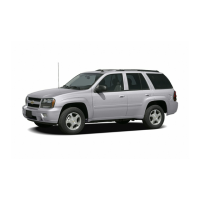
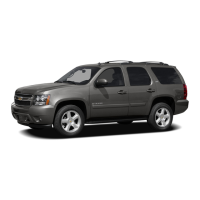

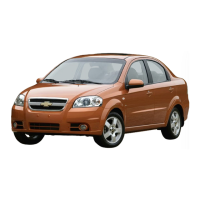
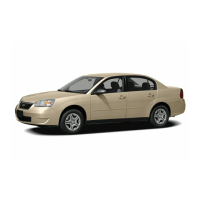
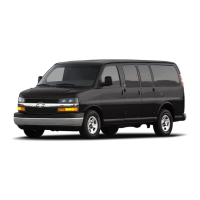
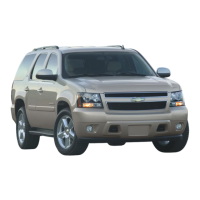

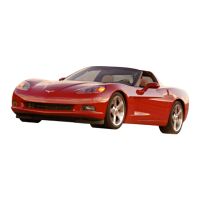

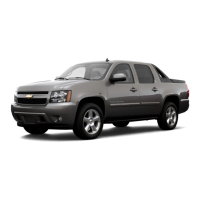
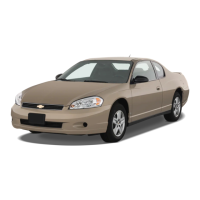
